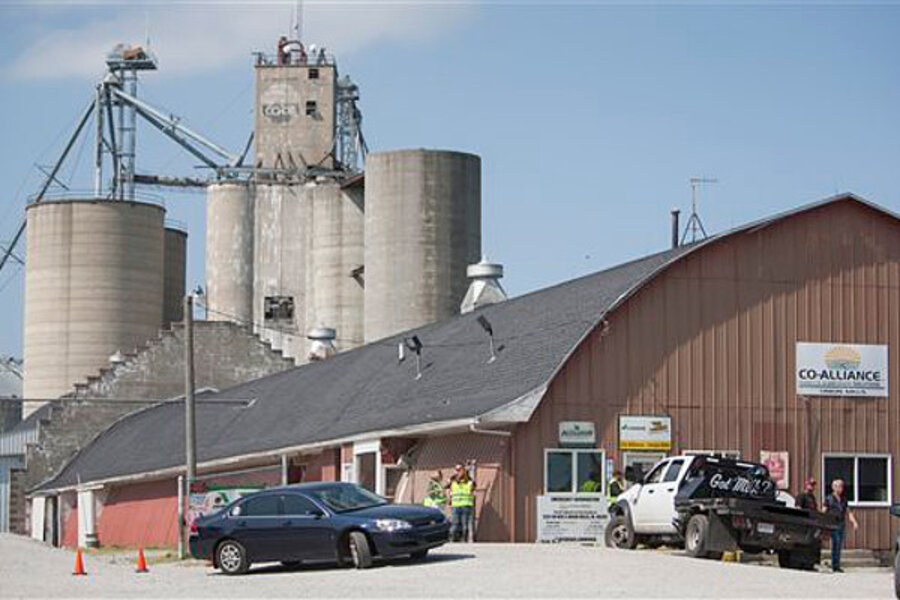Indiana explosion: What caused the fatal explosion?
| UNION MILLS, Indiana
Indiana explosion: An explosion Monday inside a grain elevator killed a worker at a sprawling northwestern Indiana farm co-op, authorities said.
The cause of the blast at the Union Mills Co-op remained unknown Monday evening several hours after the blast. The U.S. Bureau of Alcohol, Tobacco, Firms and Explosives and the Indiana Occupational Safety and Health Administration were among the agencies sending investigators to the scene.
It wasn't clear where the victim, James Swank, 67, of Union Mills, was at time of the blast, but he might have been loading grain into train cars with two other workers, Maj. John Boyd of the LaPorte County Sheriff's Department said.
"At this point we're just not sure," Boyd said.
All other employees were accounted for and no other injuries were reported.
Swank died from multiple blunt force trauma, Coroner John Sullivan said. It may have been a grain dust explosion, he said.
"Neighbors reported a large, concussion-like explosion that shook their homes, followed by a large amount of white smoke," Sullivan said.
Purdue University farm safety expert Steve Wettschurack said grain dust is highly volatile, and a small spark, even from someone using a hammer, can set off a blast, Wettschurack said.
"It'll shake the countryside. There's a lot of power to it. But there's not really a lot of fire to it," he said.
The U.S. Occupational Safety and Health Administration website says more than 500 explosions in grain-handling facilities across the nation over the last 35 years have killed 180 people and injured more than 675. Grain dust is the main source of fuel for explosions in grain handling, the website said.
Shawn Lambert, safety manager for Avon, Indiana-based co-op owner Co-Alliance, says the explosion occurred inside a grain elevator with several connected silos.
Boyd said the co-op property covers several acres and includes storage for hazardous material, including fertilizers and anhydrous ammonia, elsewhere on the site. The property is about 50 miles (80 kilometers) southeast of Chicago.
The Indiana Occupational Safety and Health Administration has no record of any inspections at the co-op, spokesman Bob Dittmer said.
Co-Alliance is a farmer-owned supply and marketing cooperative serving rural communities in Indiana, Ohio and southern Michigan.





